Abstract
Monoclonal antibodies with specificities for subsets of human leucocytes have been used for the characterization of alpha-interferon (alpha-IFN) producing cells. The production of alpha-IFN was demonstrated to be a function of Ia+ leucocytes. OKT3+ T lymphocytes, BA-1+ B lymphocytes and Leu 7+ natural killer (NK) cells did not contribute to the production of alpha-IFN. OKM1+ monocytes were essential for the production of alpha-IFN in response to bacterial products or leukaemia cells, but were not required for the synthesis of virus- or poly I:C-induced alpha-IFN. The results indicate that alpha-IFN producing cells represent a heterogenous population of cells of the myeloid lineage.
Full text
PDF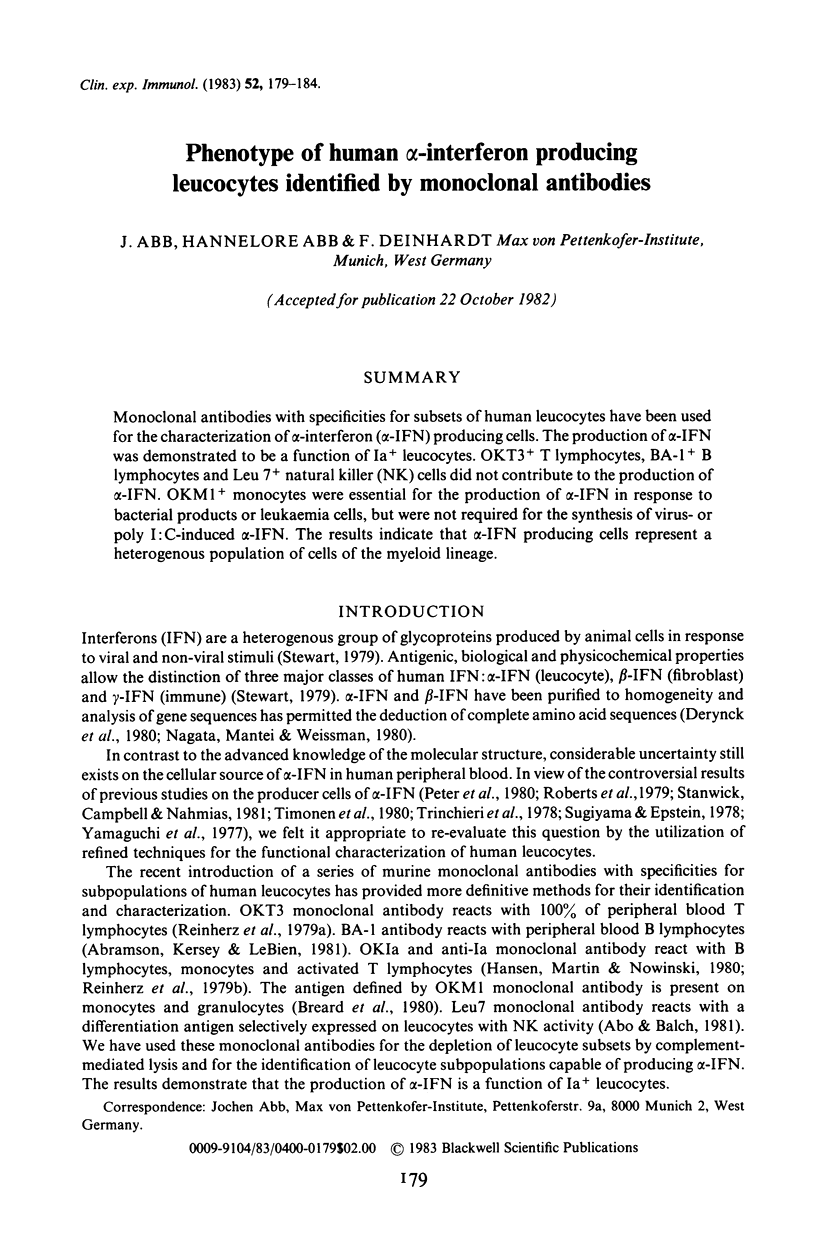
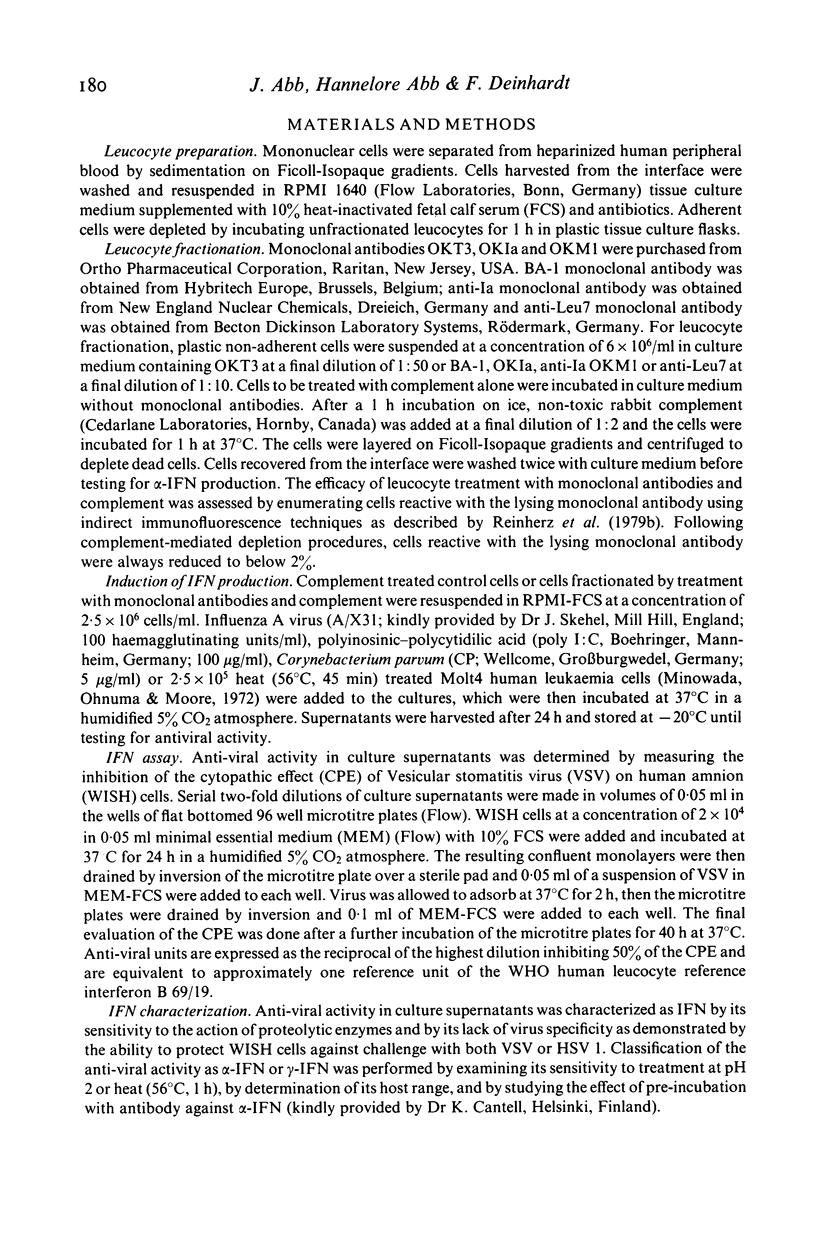
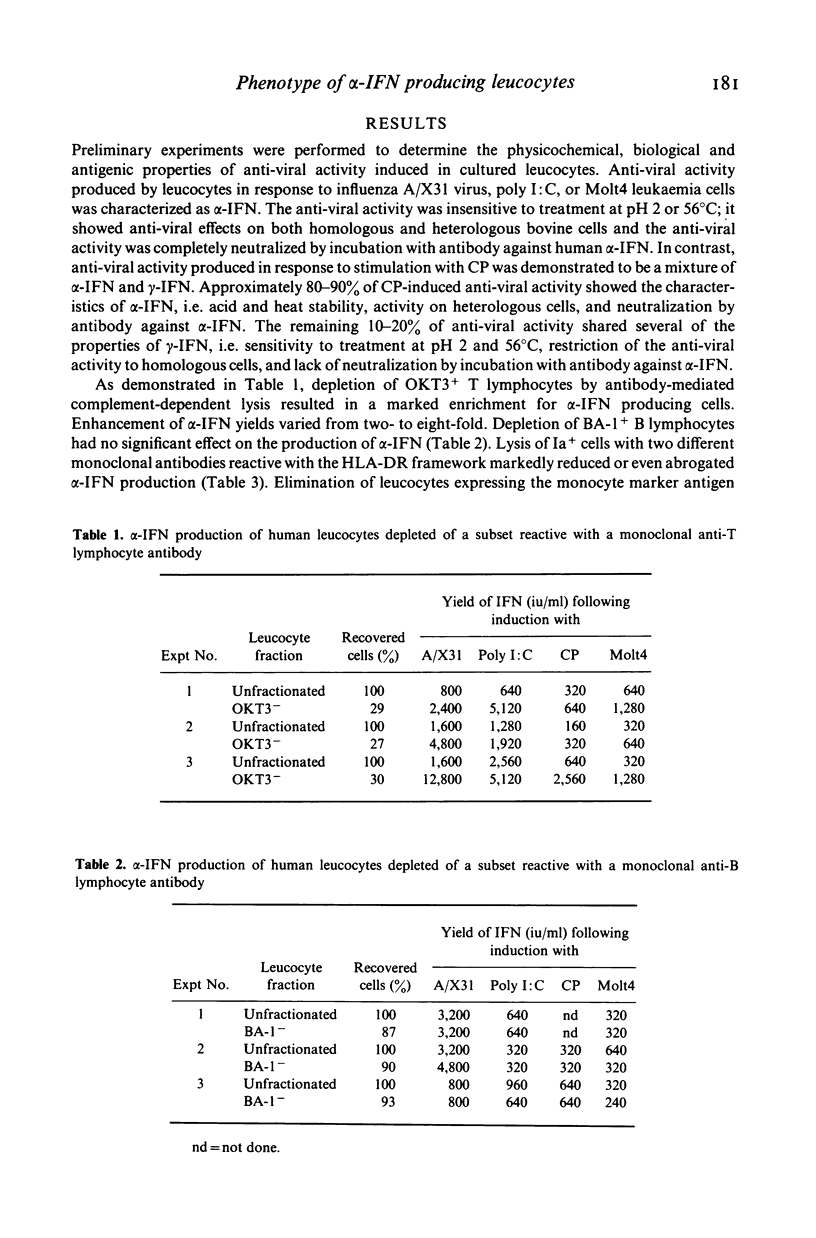
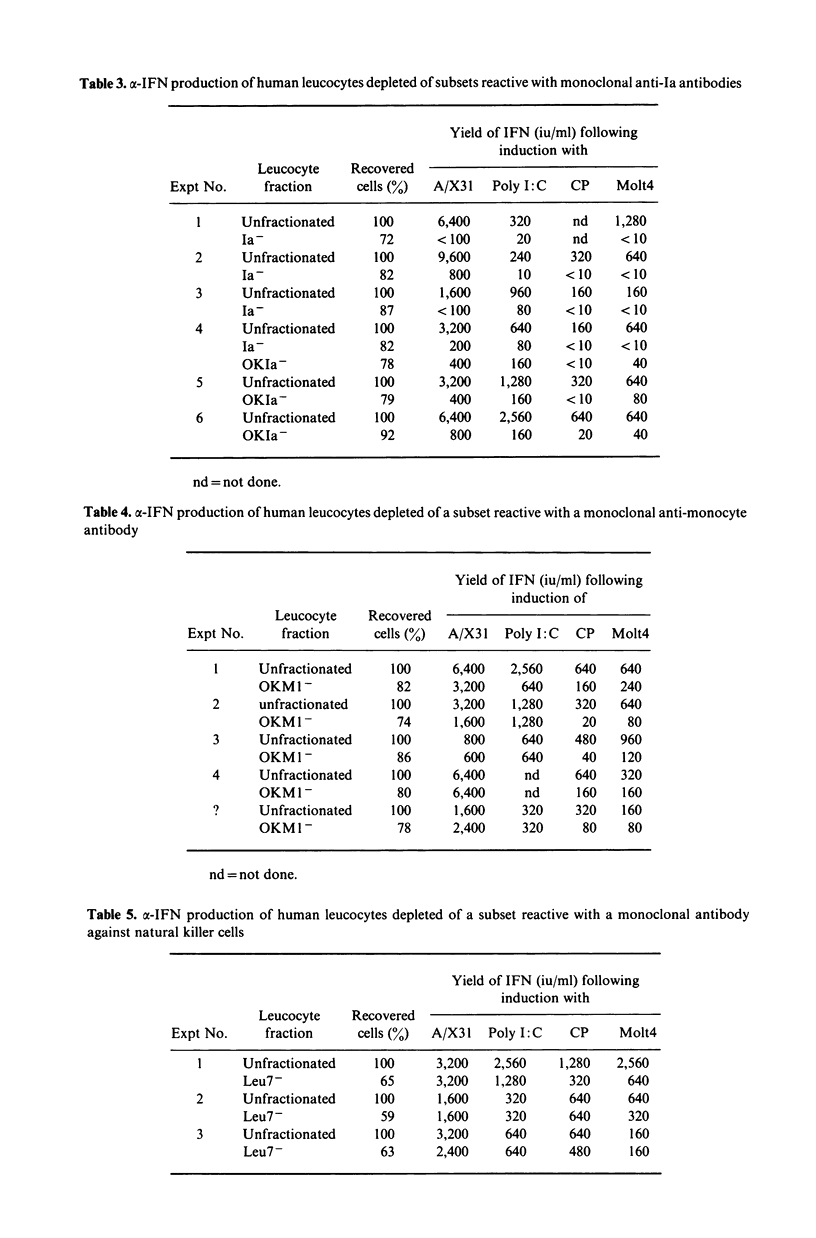
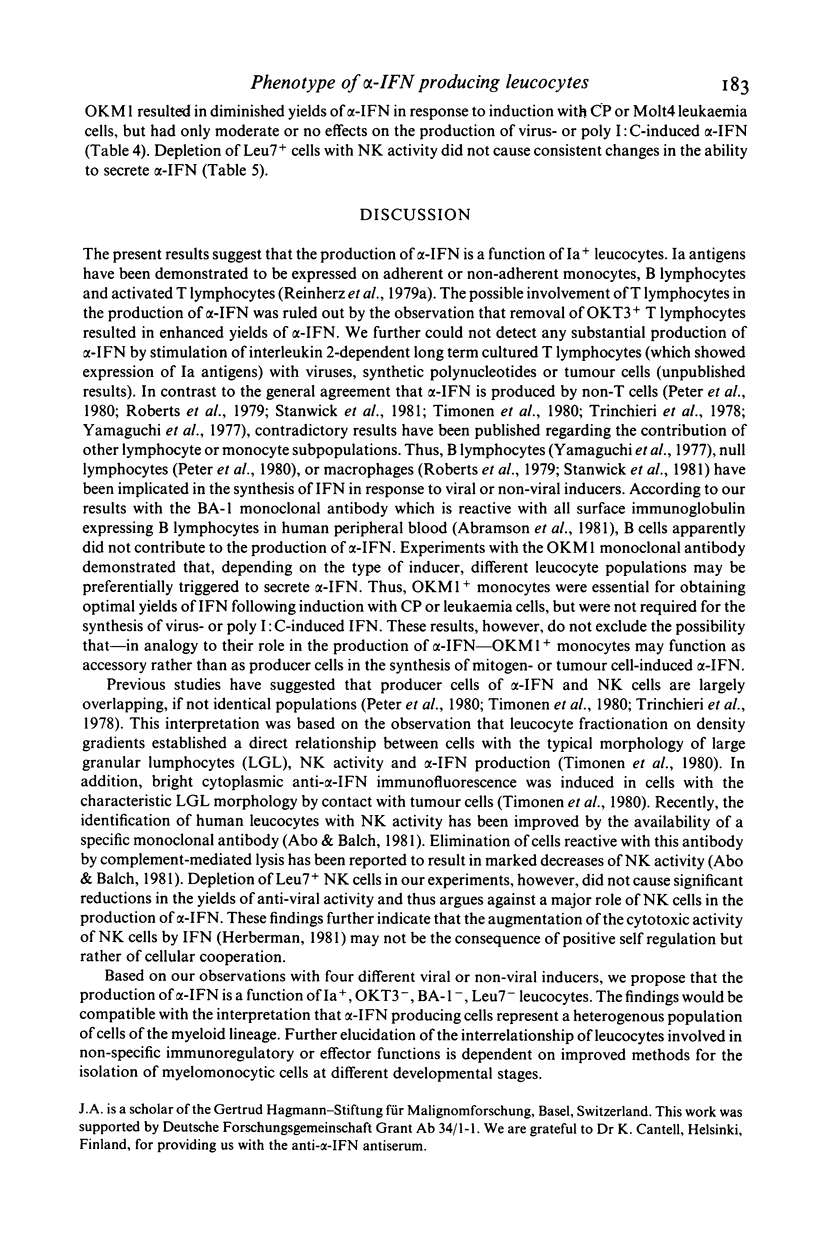
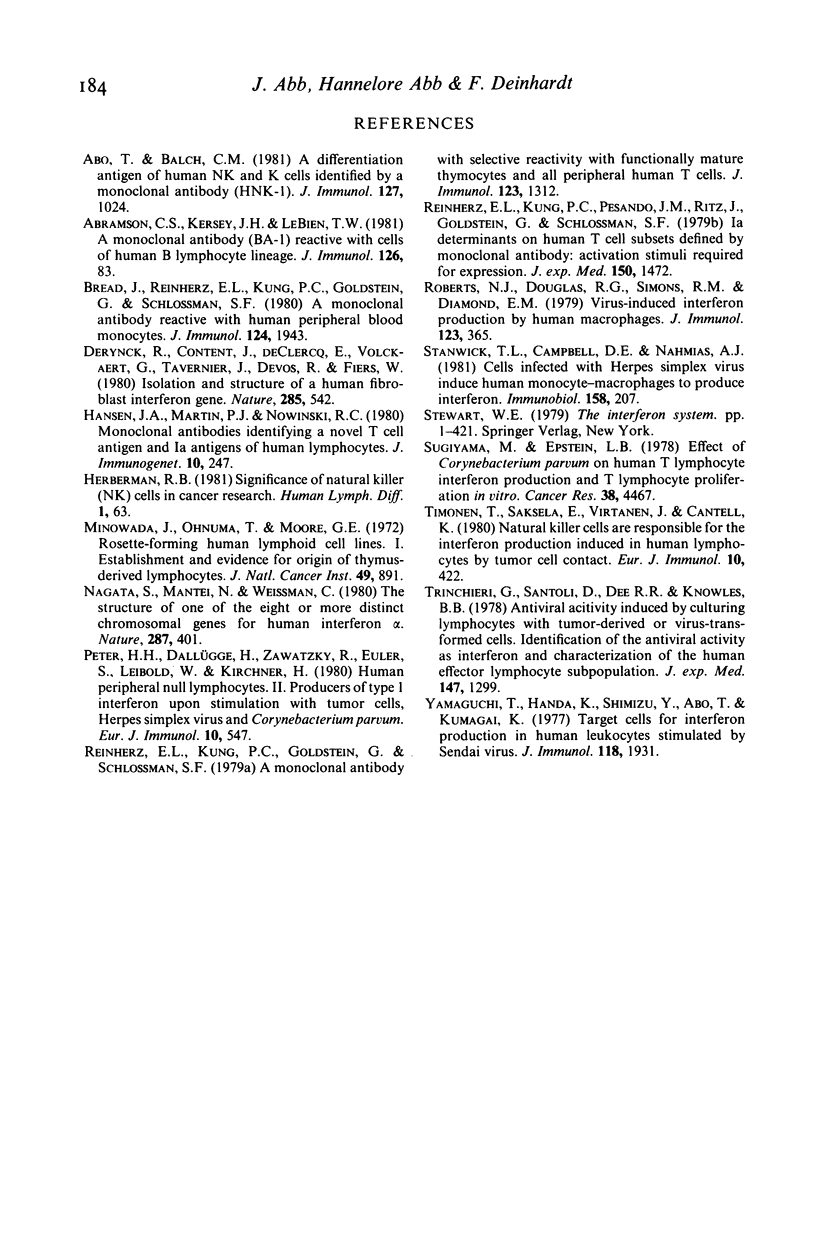
Selected References
These references are in PubMed. This may not be the complete list of references from this article.
- Abo T., Balch C. M. A differentiation antigen of human NK and K cells identified by a monoclonal antibody (HNK-1). J Immunol. 1981 Sep;127(3):1024–1029. [PubMed] [Google Scholar]
- Abramson C. S., Kersey J. H., LeBien T. W. A monoclonal antibody (BA-1) reactive with cells of human B lymphocyte lineage. J Immunol. 1981 Jan;126(1):83–88. [PubMed] [Google Scholar]
- Breard J., Reinherz E. L., Kung P. C., Goldstein G., Schlossman S. F. A monoclonal antibody reactive with human peripheral blood monocytes. J Immunol. 1980 Apr;124(4):1943–1948. [PubMed] [Google Scholar]
- Derynck R., Content J., DeClercq E., Volckaert G., Tavernier J., Devos R., Fiers W. Isolation and structure of a human fibroblast interferon gene. Nature. 1980 Jun 19;285(5766):542–547. doi: 10.1038/285542a0. [DOI] [PubMed] [Google Scholar]
- Minowada J., Onuma T., Moore G. E. Rosette-forming human lymphoid cell lines. I. Establishment and evidence for origin of thymus-derived lymphocytes. J Natl Cancer Inst. 1972 Sep;49(3):891–895. [PubMed] [Google Scholar]
- Nagata S., Mantei N., Weissmann C. The structure of one of the eight or more distinct chromosomal genes for human interferon-alpha. Nature. 1980 Oct 2;287(5781):401–408. doi: 10.1038/287401a0. [DOI] [PubMed] [Google Scholar]
- Peter H. H., Dallügge H., Zawatzky R., Euler S., Leibold W., Kirchner H. Human peripheral null lymphocytes. II. Producers of type-1 interferon upon stimulation with tumor cells, Herpes simplex virus and Corynebacterium parvum. Eur J Immunol. 1980 Jul;10(7):547–555. doi: 10.1002/eji.1830100712. [DOI] [PubMed] [Google Scholar]
- Reinherz E. L., Kung P. C., Goldstein G., Schlossman S. F. A monoclonal antibody with selective reactivity with functionally mature human thymocytes and all peripheral human T cells. J Immunol. 1979 Sep;123(3):1312–1317. [PubMed] [Google Scholar]
- Reinherz E. L., Kung P. C., Pesando J. M., Ritz J., Goldstein G., Schlossman S. F. Ia determinants on human T-cell subsets defined by monoclonal antibody. Activation stimuli required for expression. J Exp Med. 1979 Dec 1;150(6):1472–1482. doi: 10.1084/jem.150.6.1472. [DOI] [PMC free article] [PubMed] [Google Scholar]
- Roberts N. J., Jr, Douglas R. G., Jr, Simons R. M., Diamond M. E. Virus-induced interferon production by human macrophages. J Immunol. 1979 Jul;123(1):365–369. [PubMed] [Google Scholar]
- Stanwick T. L., Campbell D. E., Nahmias A. J. Cells infected with herpes simplex virus induce human monocyte-macrophages to produce interferon. Immunobiology. 1981;158(3):207–212. doi: 10.1016/S0171-2985(81)80070-8. [DOI] [PubMed] [Google Scholar]
- Sugiyama M., Epstein L. B. Effect of Corynebacterium parvum on human T-lymphocyte interferon production and T-lymphocyte proliferation in vitro. Cancer Res. 1978 Dec;38(12):4467–4473. [PubMed] [Google Scholar]
- Trinchieri G., Santoli D., Dee R. R., Knowles B. B. Anti-viral activity induced by culturing lymphocytes with tumor-derived or virus-transformed cells. Identification of the anti-viral activity as interferon and characterization of the human effector lymphocyte subpopulation. J Exp Med. 1978 May 1;147(5):1299–1313. doi: 10.1084/jem.147.5.1299. [DOI] [PMC free article] [PubMed] [Google Scholar]
- Yamaguchi T., Handa K., Shimizu Y., Abo T., Kumagai K. Target cells for interferon production in human leukocytes stimulated by sendai virus. J Immunol. 1977 Jun;118(6):1931–1935. [PubMed] [Google Scholar]


